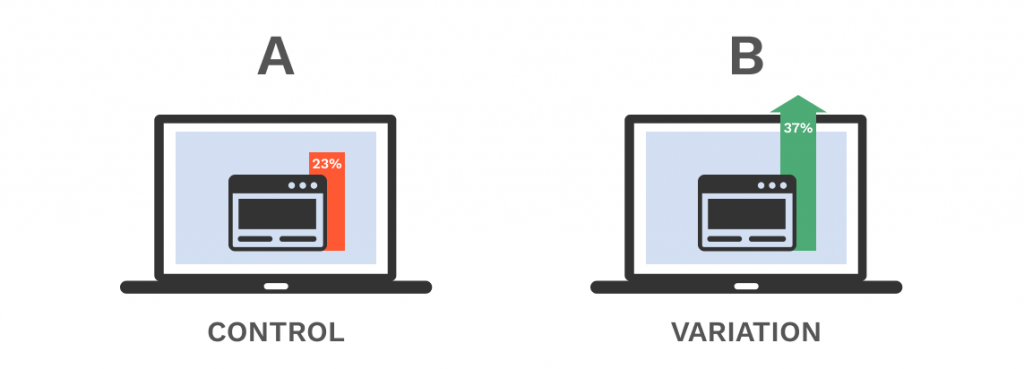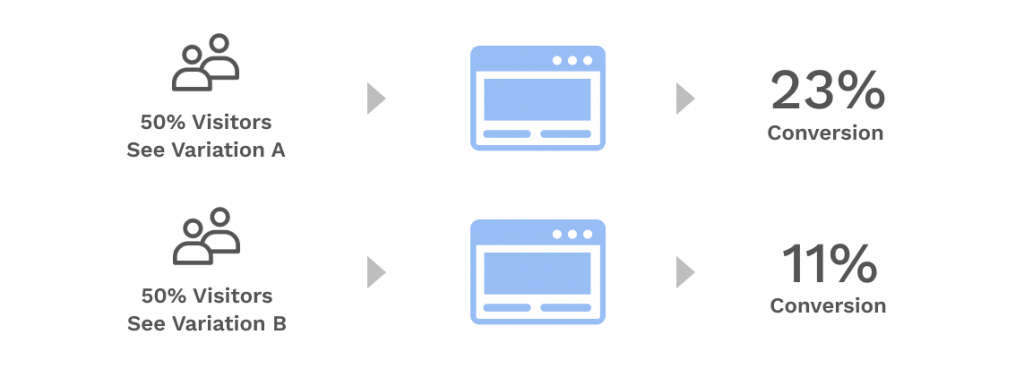Why You Should Continuously A/B Test Your Ecommerce Site
Why You Should Continuously A/B Test Your Ecommerce Site
The global market for A/B testing software is set to triple over the next ten years, growing from $1.1 billion in 2022 to $3.4 billion in 2032 with a sustained compound annual growth rate (CAGR) of 11.6%. Factors contributing to the growth of A/B testing include its affordability and technical simplicity, making it attractive to businesses of all sizes.
If a significant portion of your business takes place online, consider implementing ecommerce A/B testing to improve your site’s performance and provide a better user experience to your customers.
In this guide, you’ll learn what A/B testing is and how continuously testing your ecommerce site can contribute to your bottom line.
Key Takeaways
- A/B testing has become an increasingly popular technique for driving business in ecommerce sites.
- A/B testing compares how a site’s users interact with two variations of a website element, such as an image, theme, font, or text.
- A/B testing enables quantitative assessment of otherwise subjective site features and is sufficiently low-cost to allow continuous running.
What is A/B Testing?

In marketing and ecommerce, A/B or split testing is a popular method for comparing the performance of two versions of a page element to see which one users prefer or respond to more positively. To measure performance, A/B tests serve half of the users selected randomly with one variant of a page element or feature and the other half with a second or beta variant. For A/B tests to yield meaningful results, the user pool must be large enough to have statistical significance, and both variants must clearly measure a specific user action with the tested page element.
Among today’s online businesses, 77% perform regular A/B tests on their websites. A/B testing has acquired such popularity in ecommerce because it is both versatile and inexpensive. Businesses can use A/B tests to derive quantitative measurements from otherwise subjective comparisons between features such as layouts, colors, fonts, and images.
Additionally, running tests on website features requires very little cost and labor compared to testing different products or other physical assets, such as brick-and-mortar store designs. With minimal upfront investment on the line, businesses can implement A/B testing continuously on ecommerce sites, making improvements in small but regular increments.
4 Ecommerce Benefits of A/B Testing
Here are four ways continuous A/B testing can drive business on your ecommerce site and help optimize profitability.
1. Increased Conversion Rates

Alt-Text: “A/B testing for conversion rates.”
A/B testing enables businesses to understand customer behavior and preferences by targeting specific elements representing choices or conversions, as marketers call them. In ecommerce, commonly targeted conversions include actions like clicking on an ad, filling out a form, or submitting an email for exclusive content.
When you run a statistically significant A/B test on any individual conversion element, the results either indicate a better-performing new option or eliminate an underperforming one. Over time, running continuous, iterative testing on your site’s major conversion elements reliably leads to better performance. Individual tests may only move the needle a few percentage points – or even just a fraction of a point. Nevertheless, the cumulative results of A/B testing every conversion element in multiple iterations ultimately add up to higher conversions and sales.
2. Reduced Bounce Rates
If your site has a high bounce rate – a measure of visitors who leave before taking any on-page actions – you can use A/B testing to determine which first impression features are causing negative impressions. On average, visitors to a new site form a qualitative first impression in just 2.6 seconds, and for 94% of people, visual and design elements influence first impressions more than text content.
Narrowing the focus to visual elements visible at the top of the page without scrolling yields a manageable set of variables to test specifically for their effect on bounce rates. For most ecommerce sites, testable first impression features include:
- WordPress or other content management system (CMS) themes
- Color schemes
- Orientations such as left or centered
- Featured images

3. Enhanced Customer Experience
Some aspects of user experience in ecommerce are black and white. For example, increasing page speed or optimizing a site for mobile devices always improves customer experience. However, other important components, such as aesthetics and design quality, are subjective and often difficult to quantify. Among online shoppers, 52% of customers decide to do business with a new brand based on site aesthetics. Unsatisfactory user experience – for either aesthetic or performance reasons – accounts for 70% of abandoned ecommerce carts.
Trying to decide what is aesthetically pleasing for customers or to assess how intuitive an experience is based on your own impressions assumes that your customers share your preferences. Alternatively, chasing large industry trends in design can cause you to overlook important preferences specific to your customer base. A/B testing for user experience can help you split the difference and make design and aesthetic choices that conform to the observed preferences of your site’s users.
4. Marketing Insights
Investing in paid advertising with new content involves risk. No matter how confident you or your marketing team feel about a new campaign or pivot in messaging, untested content may still fail to connect with your target audience for any number of unforeseen reasons. However, measuring and testing your site’s traffic can help mitigate this risk and guide your teams’ decisions about content.
Before committing to new paid advertising investments, conduct A/B testing on your site to evaluate new ideas and features. Any new content that connects with your existing customers will more likely deliver your targeted marketing results, such as improved website traffic or lead generation. This will allow you to refine your messaging and content before spending on paid campaigns.
AI-Driven Profit Optimization with Hypersonix
Hypersonix’ ProfitGPT uses the power of artificial intelligence (AI) and machine-learning to automate profit optimization and data analytics for ecommerce companies. With native integrations for major ecommerce and enterprise resource planning (ERP) platforms, ProfitGPT delivers improved bottom-line performance out-of-the-box. To learn more and schedule a personalized demo, contact Hypersonix today.
.png)
.png)



